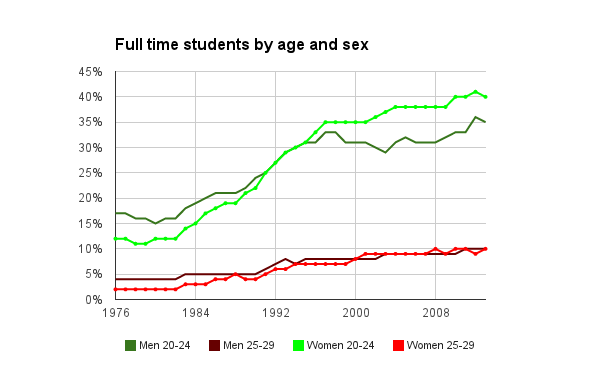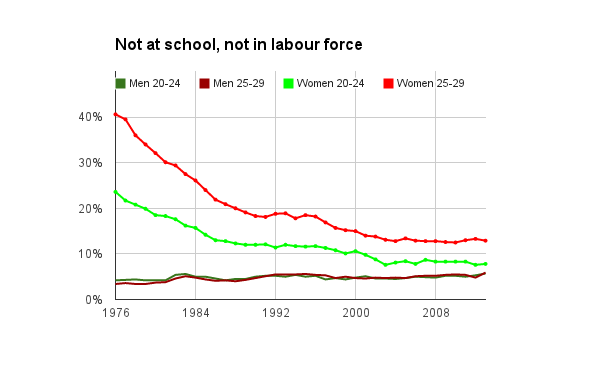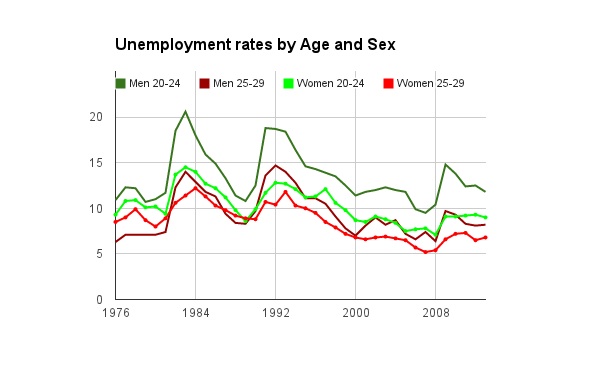Given that the 2014 federal budget talked a lot about youth unemployment, but didn’t actually do very much, I thought it would be worth going over a few trends for the 20-29 age group.
Young workers are usually hit harder by recessions, and this most recent recession was no different. You can see significant spikes in unemployment rates during recessions in the graph above. Also notice that unemployment rates were much higher in the 1981 and 1990 recessions than they are for this one.
That doesn’t mean that everything is OK now. Alongside trends in unemployment rates are changing contexts. Higher post-secondary participation rates should be expected to dampen unemployment rates, for example.
So did millennials head back to school in large numbers? Throughout the 1980s and into the 1990s, 20-24 year old men and women increased full-time education participation significantly. In this recession it looks like some youth pushed out of the labour force went back to school, but certainly not in the numbers of the past two recessions.

For the younger group, 20-24, there was a slight bump for women (38 per cent in 2008 to 40 per cent in 2013), and a larger bump for men (31 per cent in 2008 to 35 per cent in 2013). For 25-29 year-olds, full-time school participation increased through the 1990s, but has remained fairly steady since 2000 at around 10 per cent of the population.
So what proportion of youth were neither in school or in the labour force? As you might expect, this metric has changed for young women much more than it has for young men.

This group, and the precariously employed and underemployed group are of particular concern. This is where young workers are falling through the cracks, and risk long-term wage scarring, based largely on whether they were lucky enough, connected enough, privileged enough to score a good job out of school.
This is one mechanism through which inequality is reproduced and extended — unequal economic outcomes have broad social consequences.
As always, it’s useful to note that Canada is not a single labour market. Opportunities vary widely by region. Using Google charts I made a map of young worker underemployment by province. Ontario and B.C. have rates similar to the Atlantic provinces, and well above Quebec and Manitoba.
Whatever the federal government does or doesn’t do, the provincial governments have significant responsibilities in the areas of education, eliminating the exploitation of young workers in unpaid internships, implementing worker-friendly labour law, and leading regional economic development.



